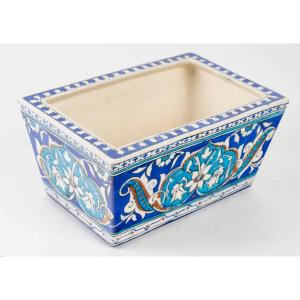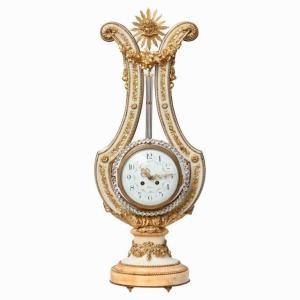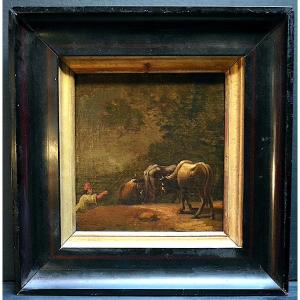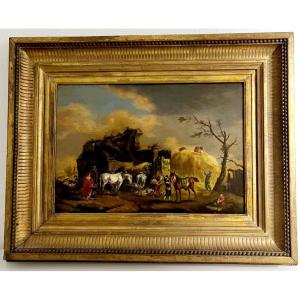Adam and Eve
Oil on canvas
Signed below left «E.R. Ménard 1923»
Labels on the back, including one from the Carnegie Institute in Pittsburgh, Pennsylvania in 1925.
Titled in a cartouche “Adam et Eve René Ménard” and in another one,
In its original molded, carved and gilded wood frame, and key-operated chassis.
“presented by John and Louise Bindley, In memory of Edward H.Bindley”
Certainly one of the artist’s masterpiece works, especially in this size
René Ménard became familiar with the painting of Corot, Millet and of the painters of Barbizon. His father, art historian and director of the Gazette des Beaux-Arts, and his uncle, a Parnassian poet, gave him a solid classical culture. After a first experience with the decorator Galand, then in the workshop of Lehmann, he receives, from 1880, the lessons of Baudry, Robert-Fleury and Bouguereau at the Académie Julian. He successively exposes to the Salon des Artistes Français from 1883, at the Société Nationale des Beaux-Arts, in Salon de la Sécession in Munich from 1893, and finally at the Salon de la Libre Esthétique in Brussels in 1897. Between 1898 and 1926, Ménard made several travels in the Mediterranean basin, sources of inspiration for his future compositions, reinforce his taste for ancient Greece. He then devoted to lyrical or pastoral themes. Ménard received orders for sets for the Sorbonne, the Faculty of Law of Paris, the Institute of Chemistry and the Caisse d'Epargne de Marseille. The artist, who’s many landscapes translate a search for ancient ideal, draws its sources from Poussin, Claude Lorrain and Puvis de Chavannes. His style evolves into vast scenes as his career progressed. His compositions are populated by dreamy figures inspired by mythology or antiquity but rarely represent a specific subject.
Bibliography:
– Jean-David Jumeau-Lafond, Les peintres de l'âme,
The idealistic symbolism in France, Ixelles, municipal museum of Ixelles, 1999,
catalogue of exhibitions, Paris, 1999.
– Catherine Guillot, “the quest for antiquity in the work of Emile-René
Ménard (1862- 1930)
Bulletin of the French Art History Society, 2000, p. 311-336







































 Le Magazine de PROANTIC
Le Magazine de PROANTIC TRÉSORS Magazine
TRÉSORS Magazine Rivista Artiquariato
Rivista Artiquariato